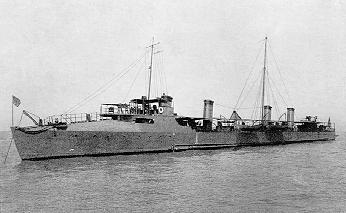
| Type | Torpedo Boat Destroyer |
| Class | Truxton |
| Displacement. | 600 tons |
| Length | 259 feet, 6 inches |
| Beam | 23 feet, 3 inches |
| Draft | 6 feet |
| Speed | 28 knots |
| Complement | 73 |
| Armament |
|

| Type | Torpedo Boat Destroyer |
| Class | Truxton |
| Displacement. | 600 tons |
| Length | 259 feet, 6 inches |
| Beam | 23 feet, 3 inches |
| Draft | 6 feet |
| Speed | 28 knots |
| Complement | 73 |
| Armament |
|